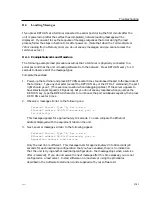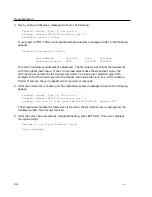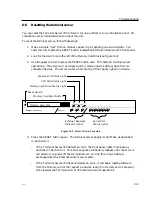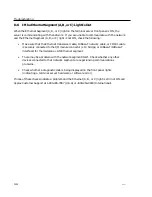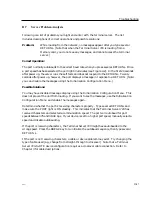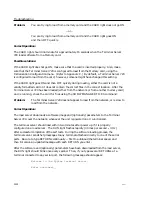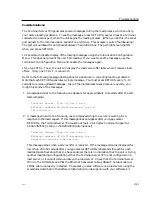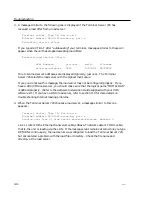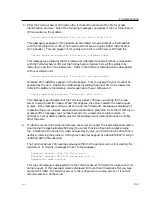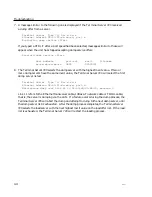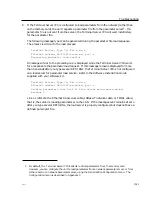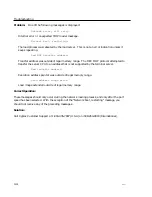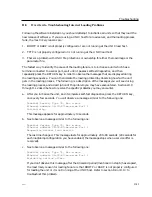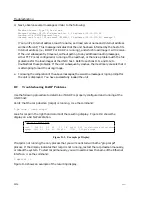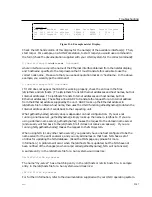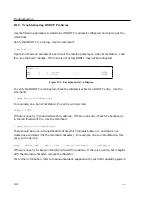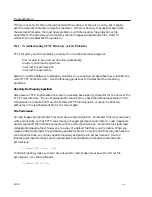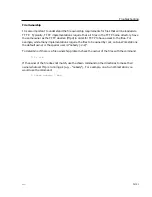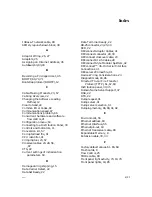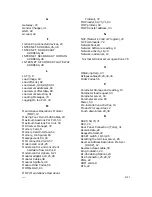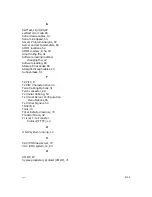
Troubleshooting
% netstat -i
Name Mtu Net/Dest Address Ipkts Ierrs Opkts Oerrs Collis Queue
le0 1500 192.12.119 unixhost 309494 2 62698 0 1014 0
lo0 1536 loopback 127.0.0.1 487350 0 487350 0 0 0
%
Figure D-4. Example netstat Display.
Check the left hand column of this display for the name(s) of the available interface(s). Then,
start rarpd. For example, on a SUN Workstation, to start rarpd you would use a command in
the form (check the documentation supplied with your UNIX system for the correct command):
% /usr/etc/rarpd
interface-name
`hostname`
where interface-name is the name of the Ethernet interface obtained from the netstat display,
and `hostname` specifies to the rarp daemon that it must translate this variable to use the
correct node name. Make sure that you use back quotation marks in `hostname`. In the above
example, you would type the command:
% /usr/etc/rarpd le0 `hostname`
If it still does not appear that RARP is working properly, check the entries in the files
/etc/ethers and /etc/hosts. (The /etc/ethers file lists Ethernet addresses and host names, but not
Internet addresses. The /etc/hosts file lists Internet addresses and host names, but not
Ethernet addresses.) These files allow RARP to translate the request for an Internet address
from the Ethernet address supplied by the unit. RARP looks up the Ethernet address in
/etc/ethers file to obtain a host name, then uses the UNIX function gethostbyname() to obtain the
Internet address which it sends back to the requesting unit.
What gethostbyname() actually does is dependent on host configuration. If you are not
running a name server, gethostbyname() simply looks up the name in /etc/hosts. If you are
using a domain name server, gethostbyname() makes the request to the domain name server
(and usually will fall back to the /etc/hosts file if it does not receive an answer). If you are
running NIS, gethostbyname() makes the request to the NIS system.
When using NIS (or any other name server), you generally have one host configured to be the
name server for the entire network, and you only add names on that host. NIS has a set of
utilities for updating the NIS database. (Read the MAN page on ypmake for more
information.) A problem will occur when the /etc/hosts file is updated, but the NIS have not
been notified of the changes (so when rarpd called gethostbyname(), NIS will not answer).
A sample entry in the /etc/ethers file for a Sun system would look like:
08:0:87:0:12:9a my-server
The name "my-server" has a matching entry in the /etc/hosts or /etc/rc.hosts file. A sample
entry in the /etc/hosts file for a Sun system would look like:
192.12.119.18 my-server
For further information, refer to the documentation supplied with your UNIX operating system.
0021
D-97

